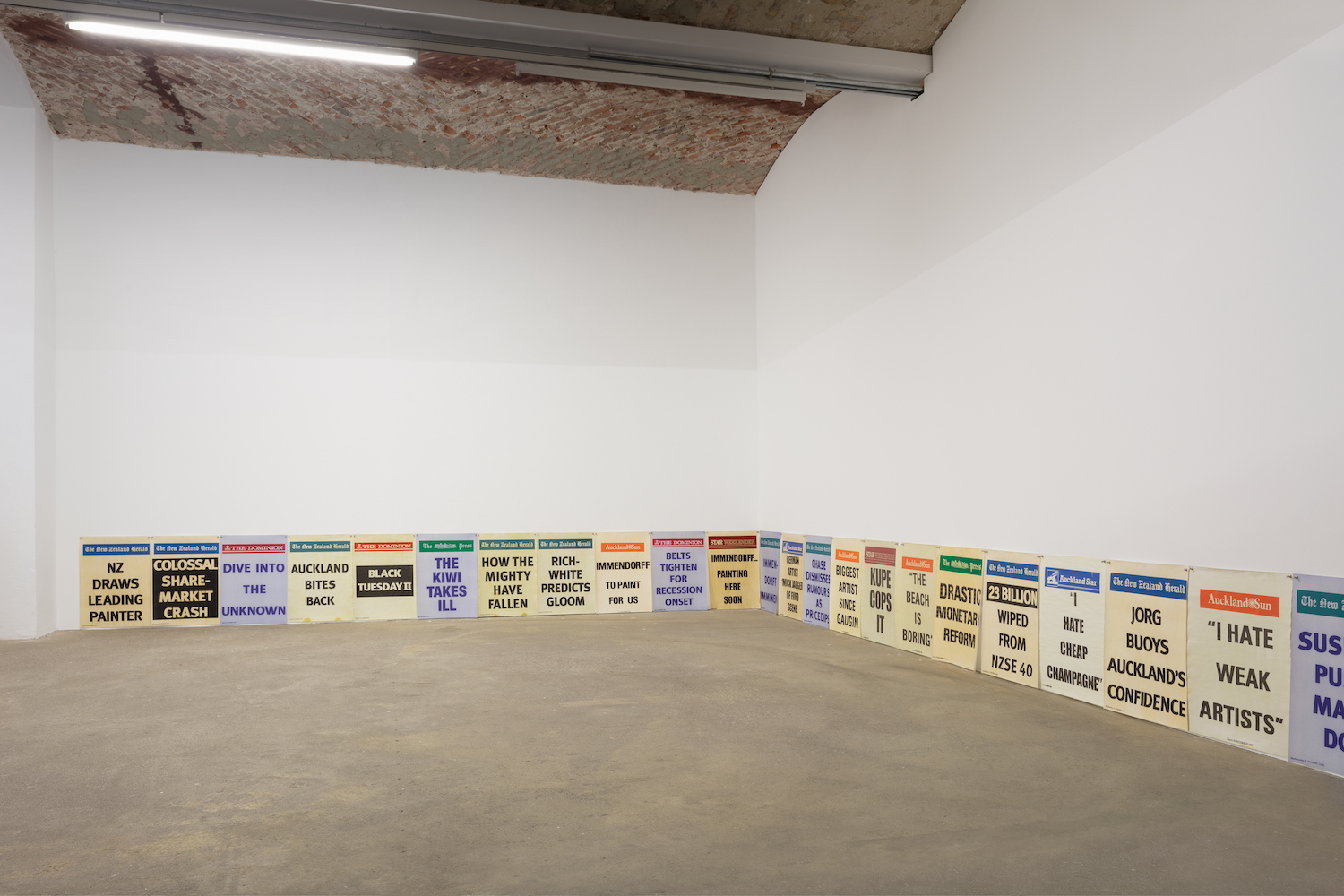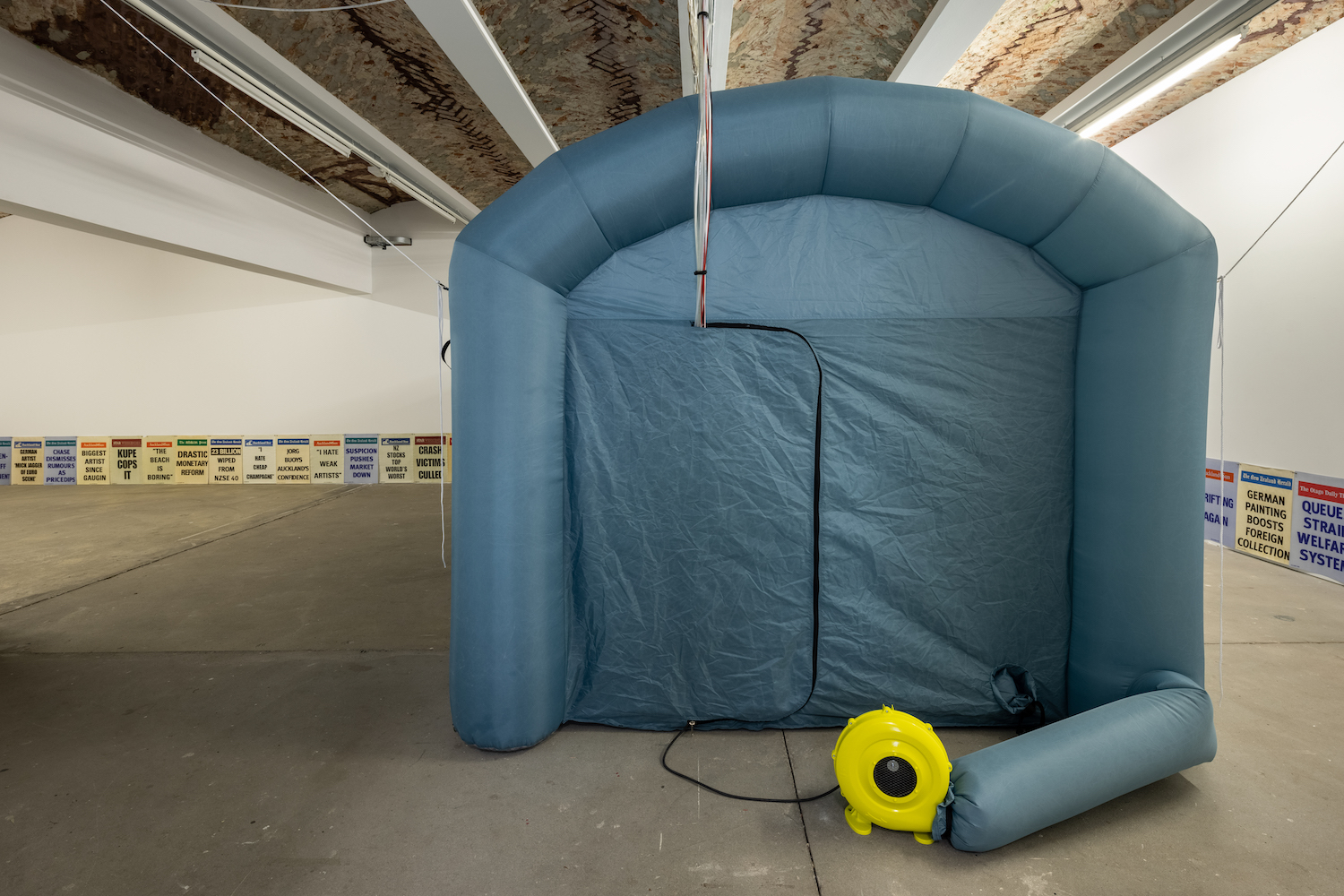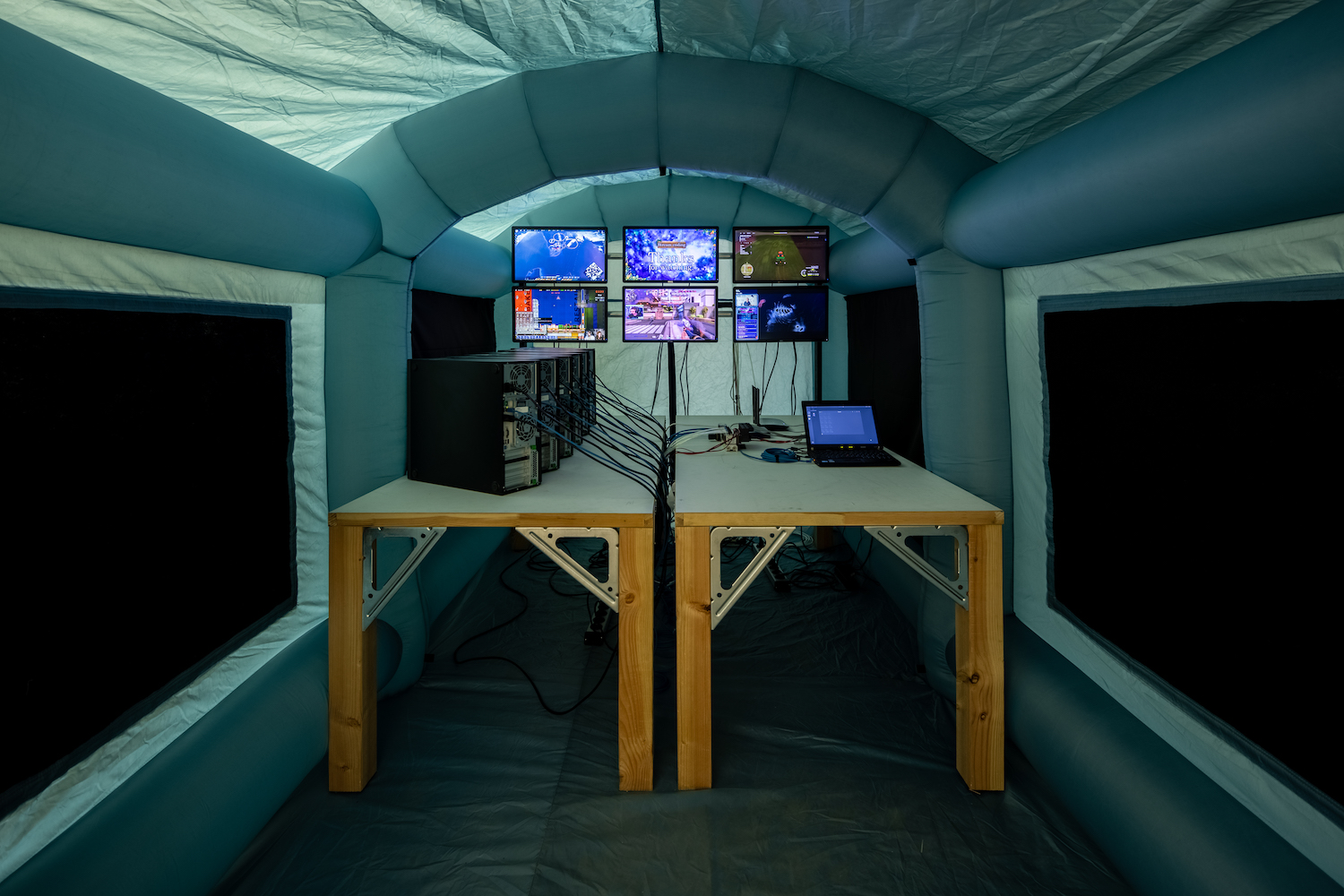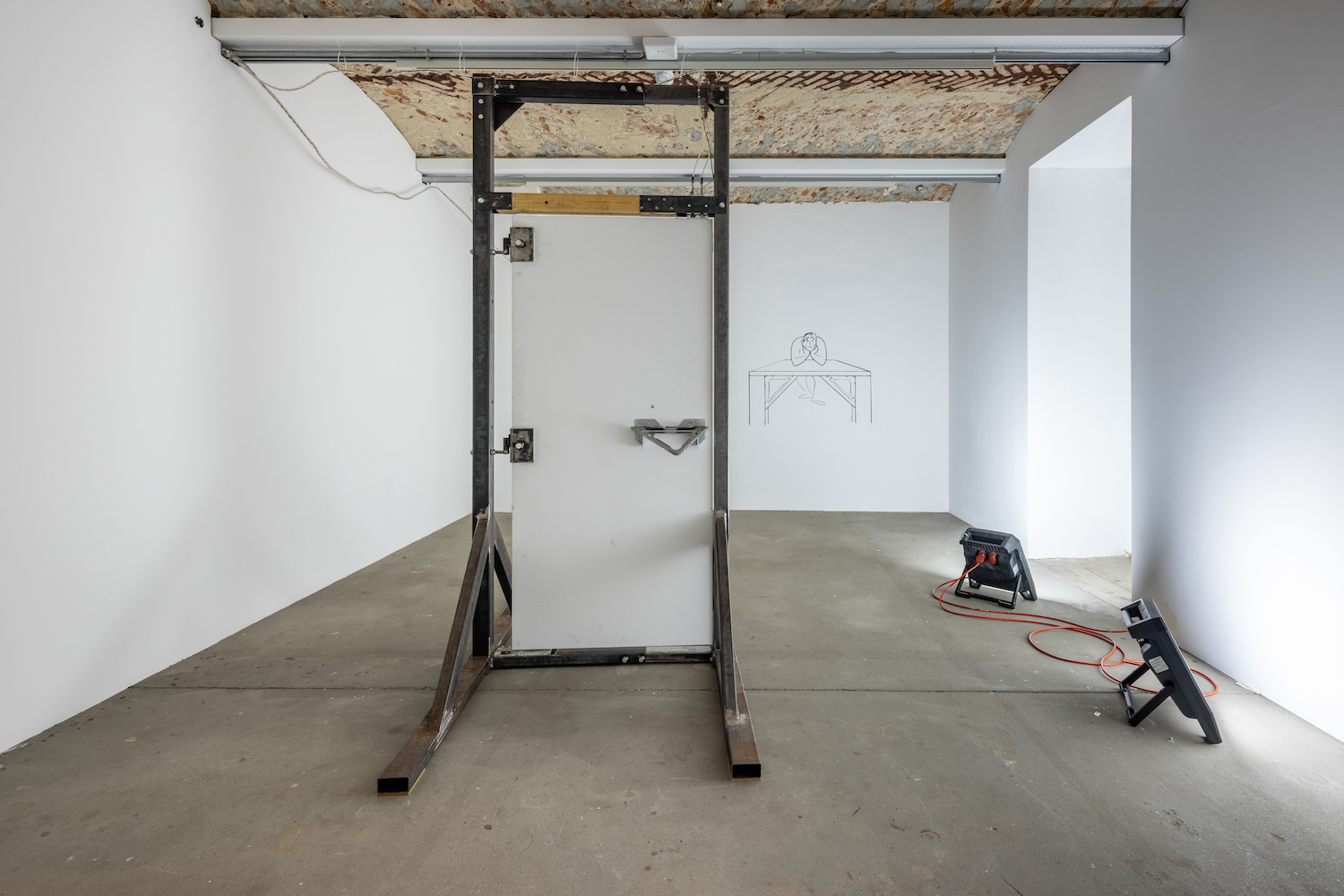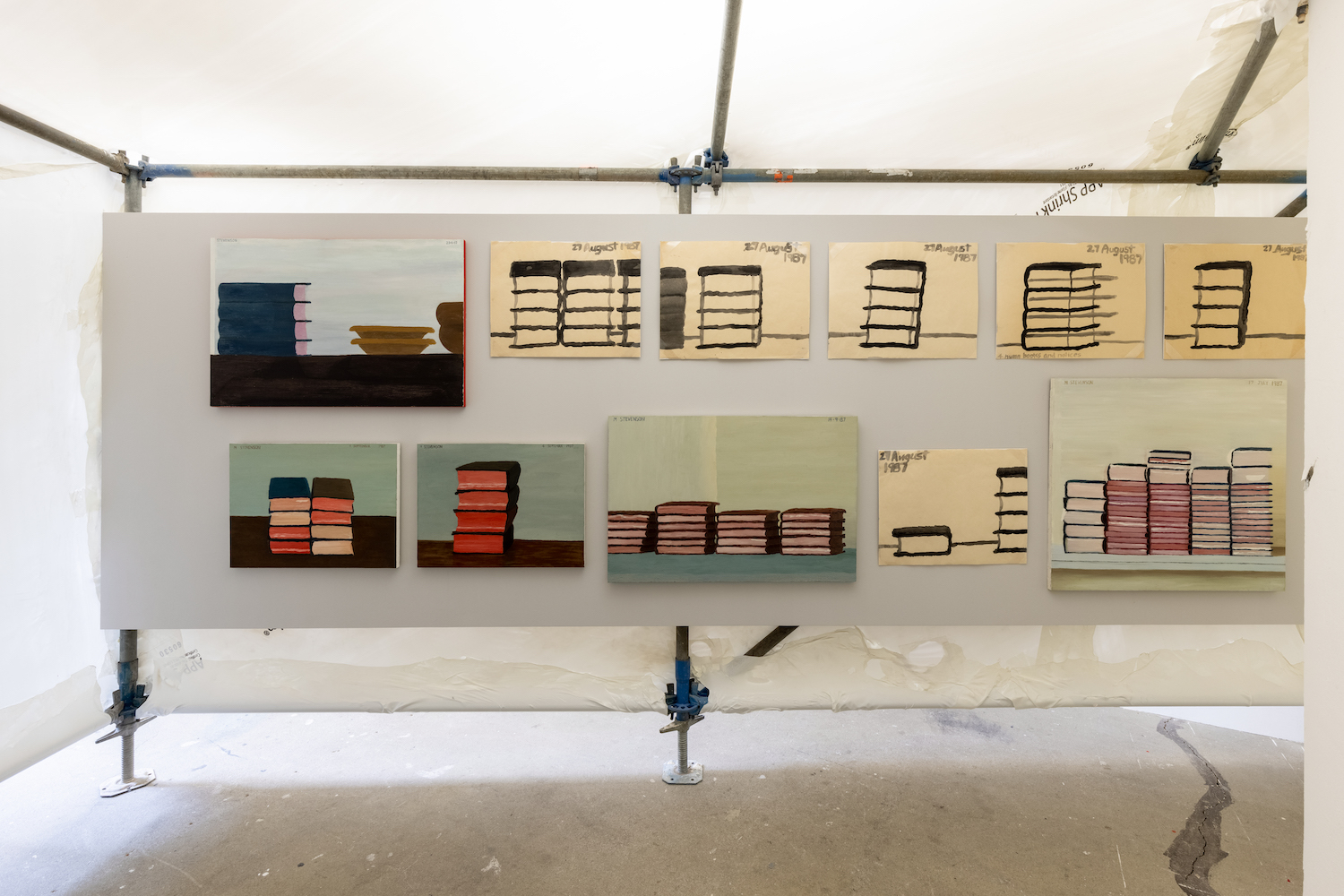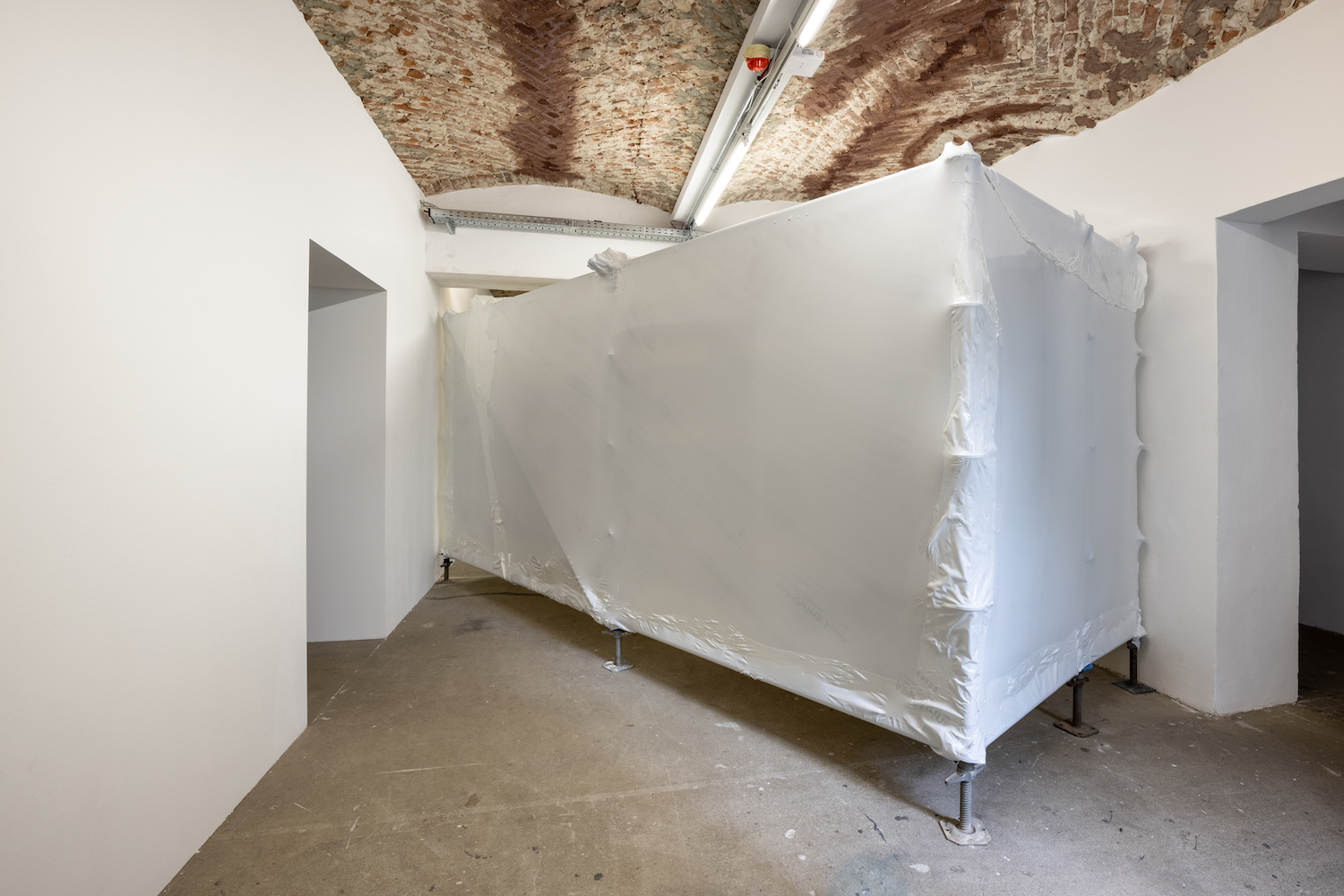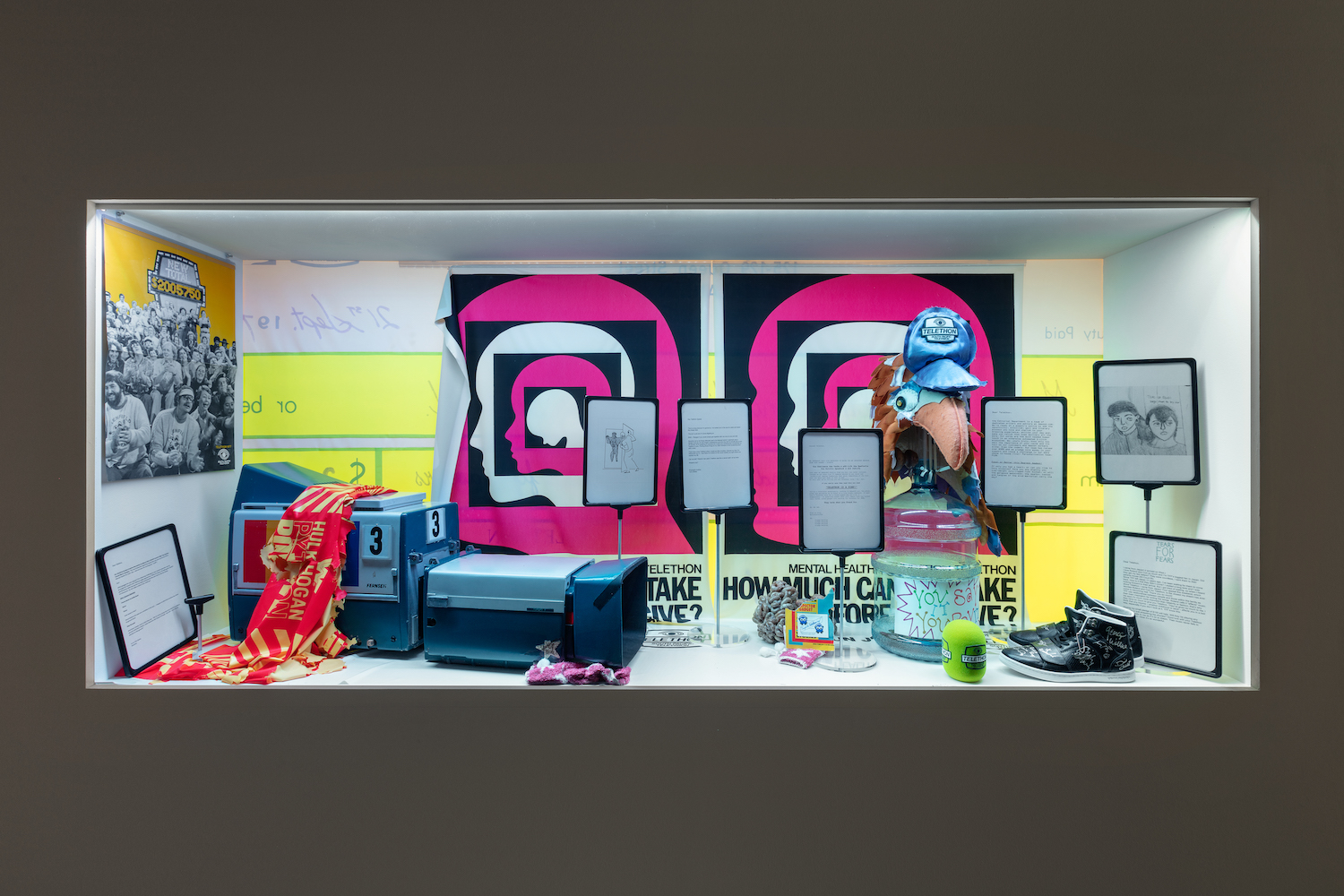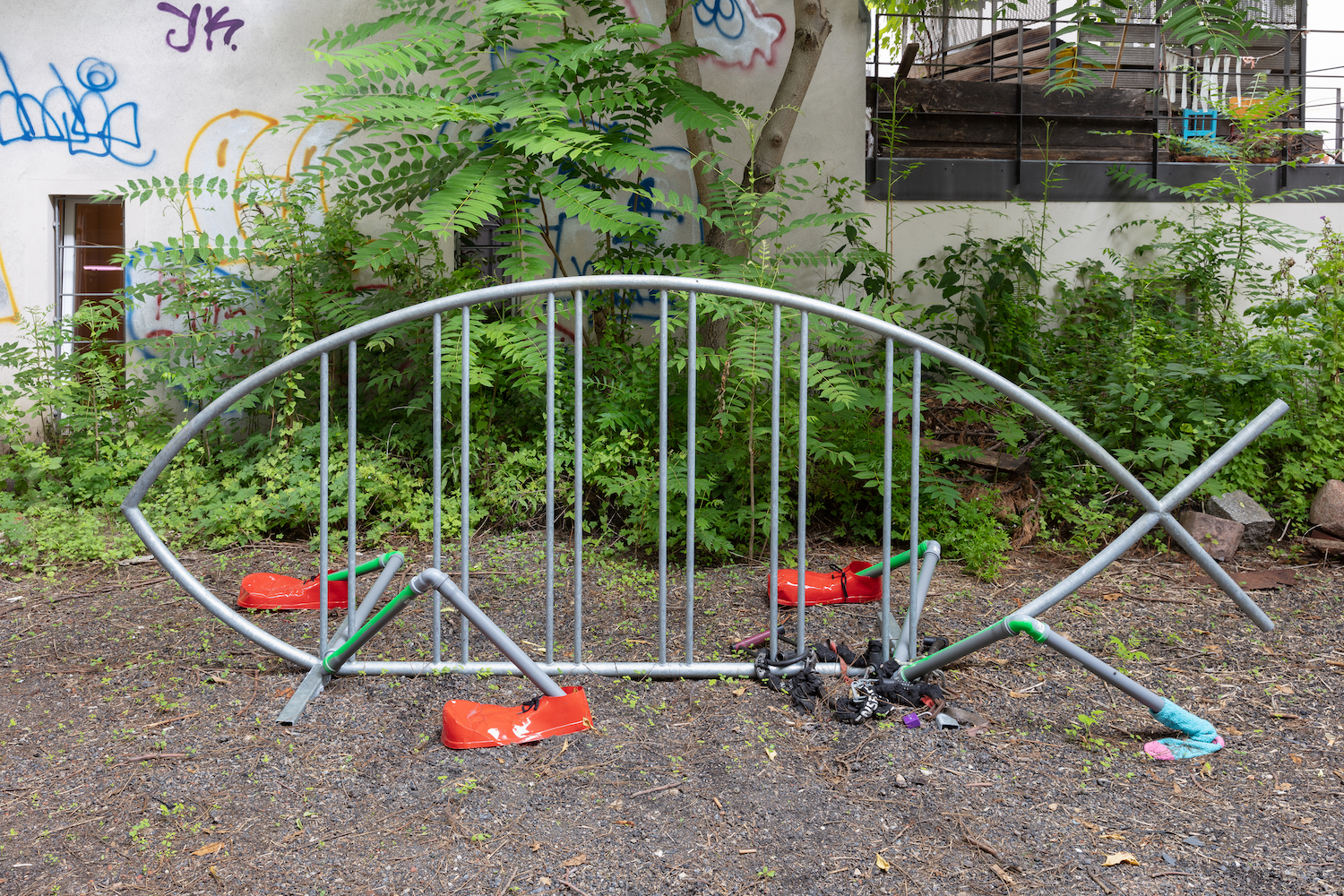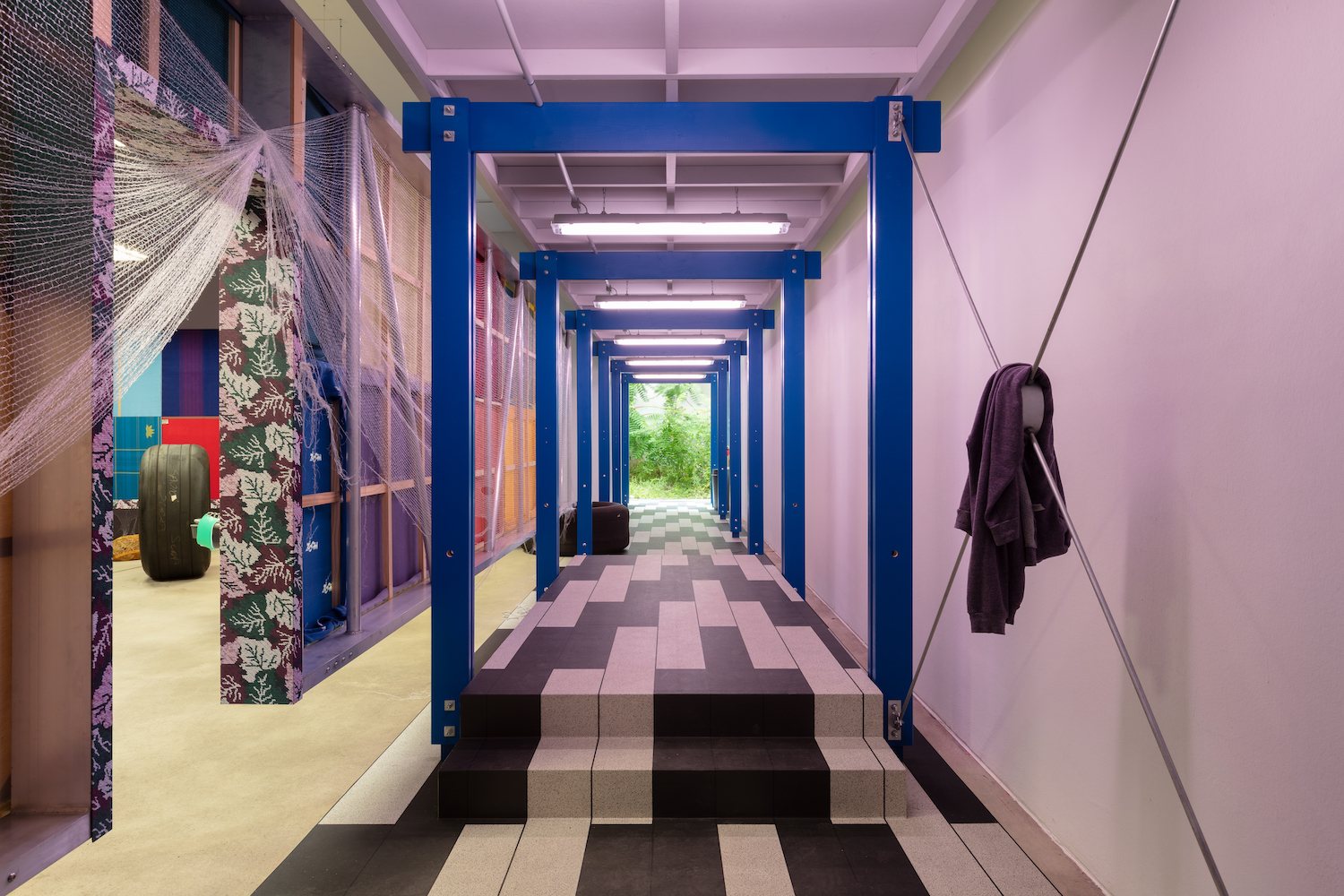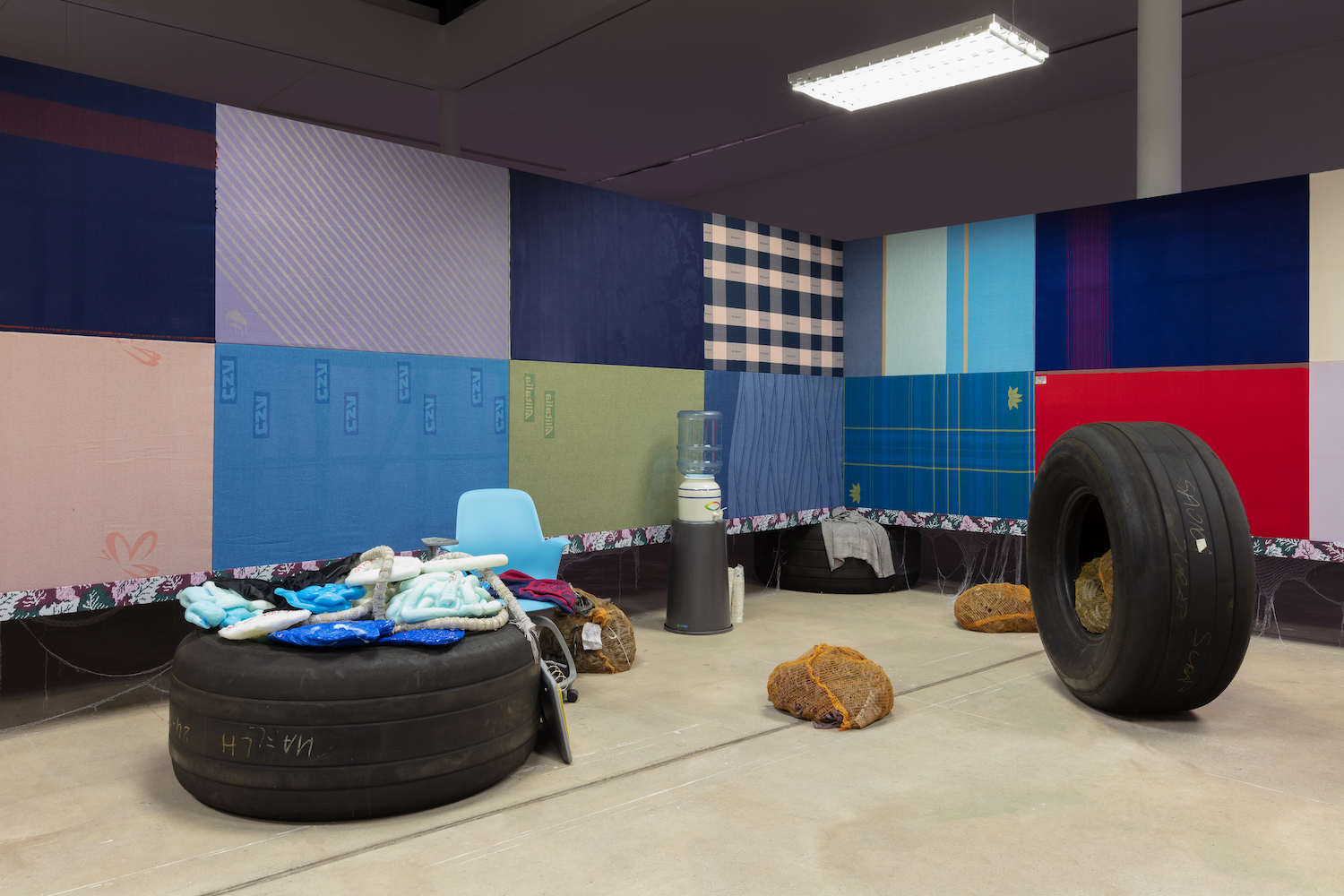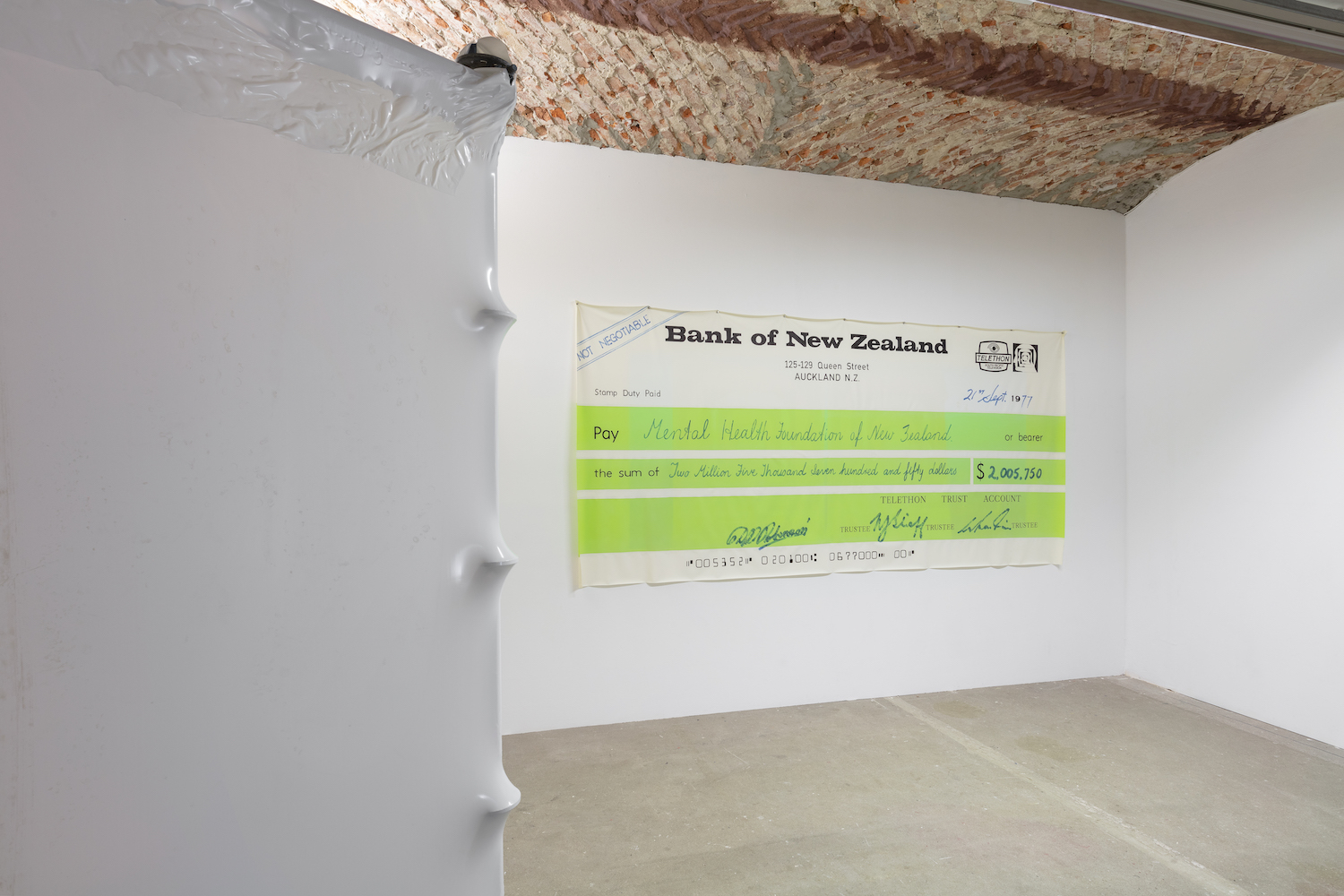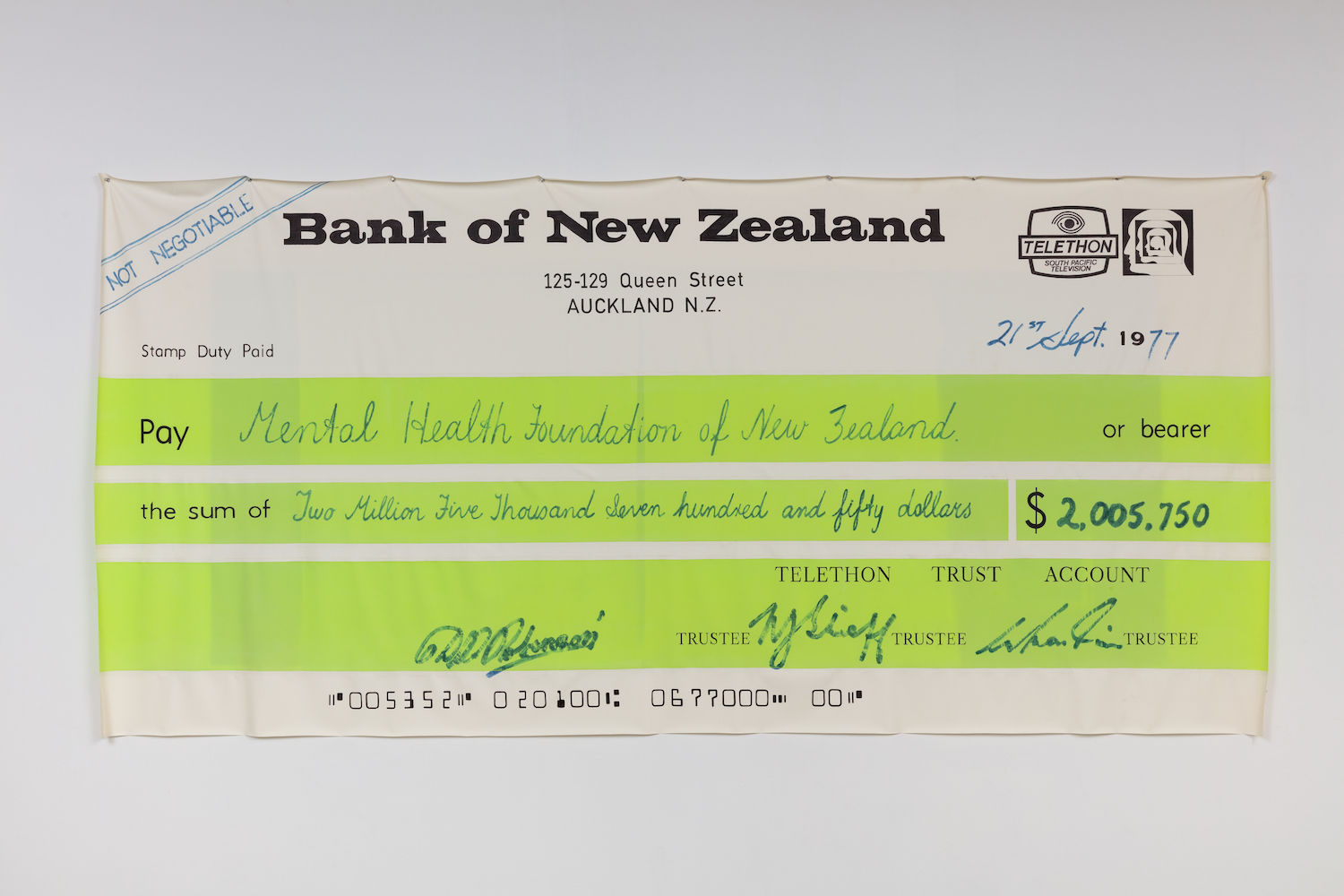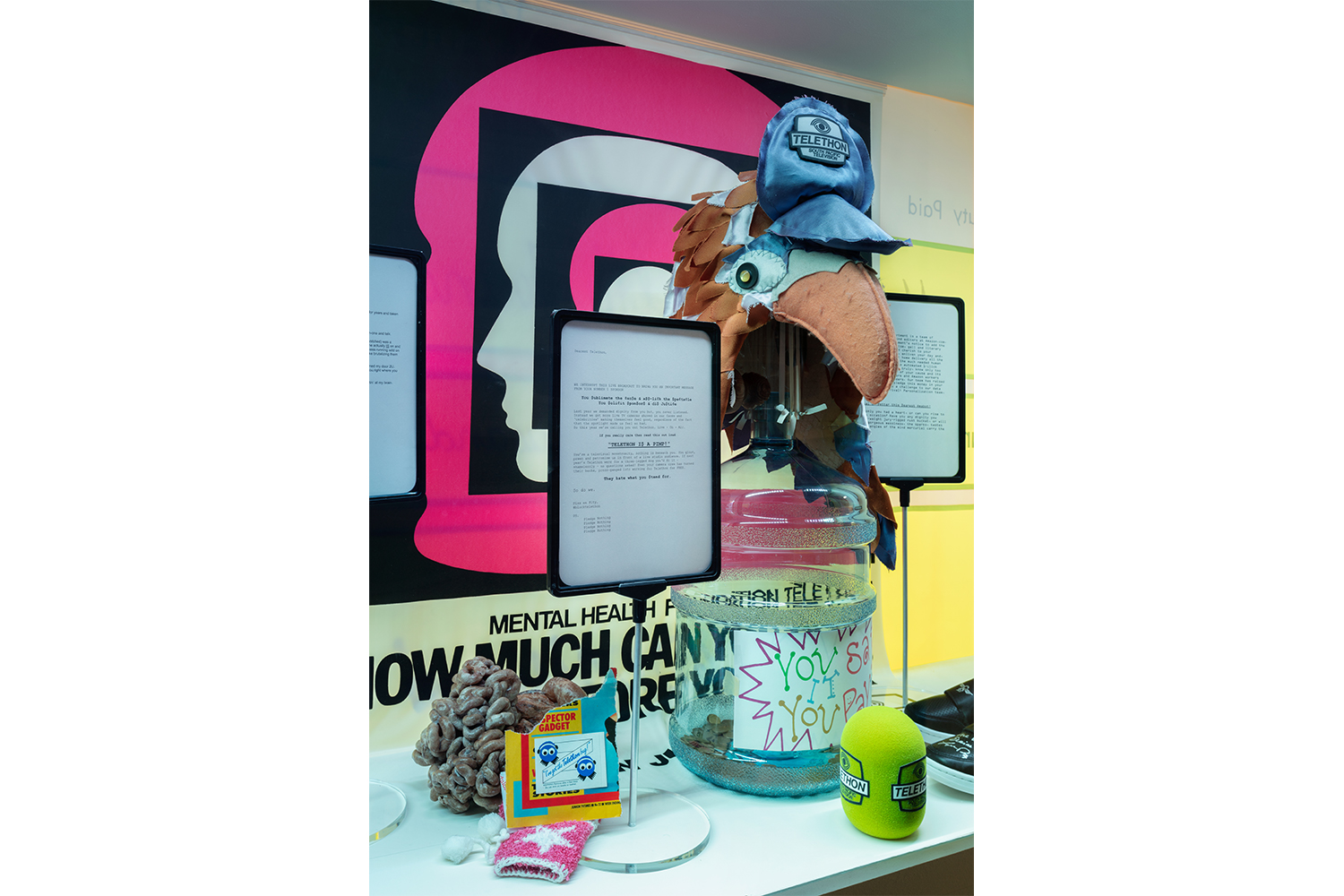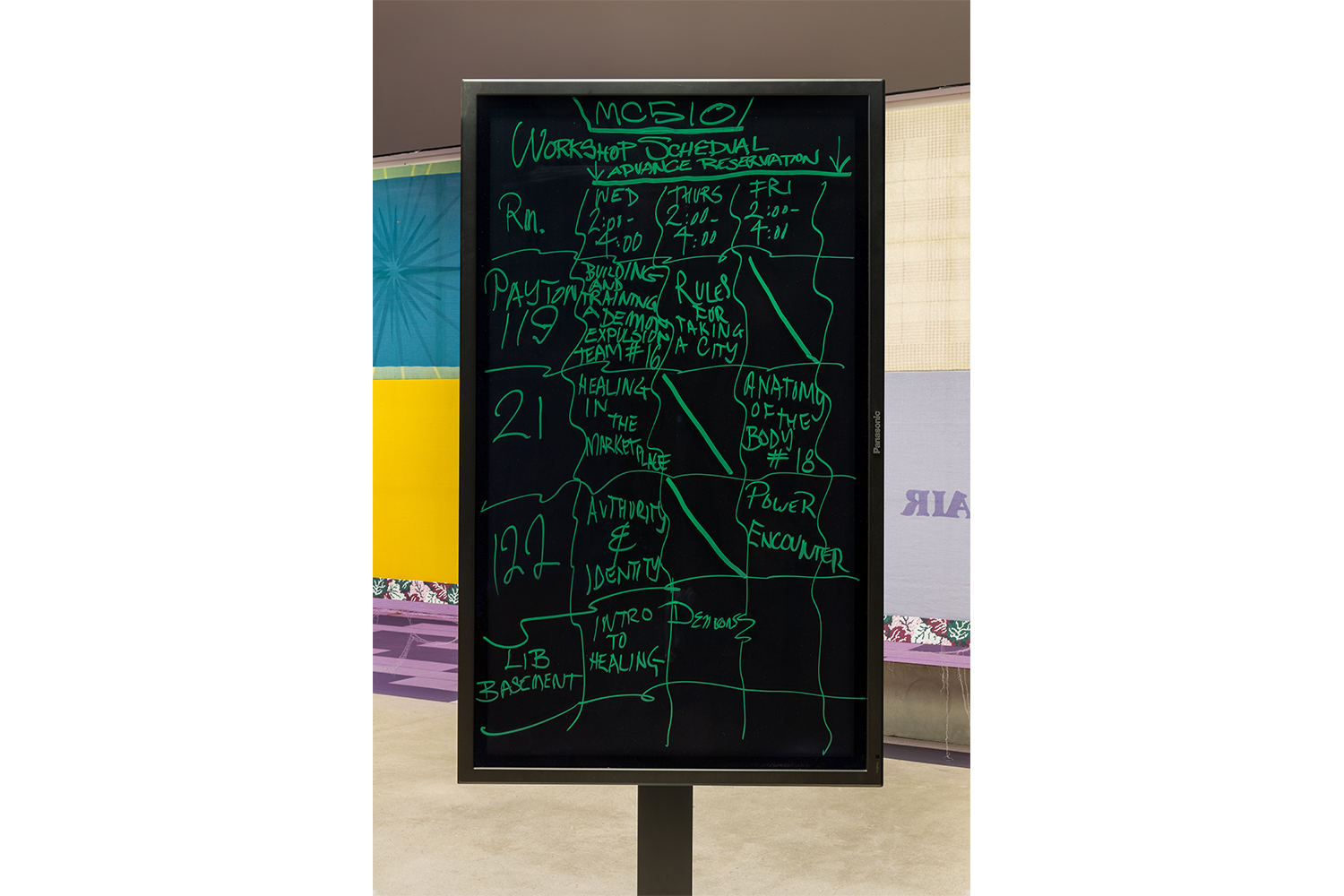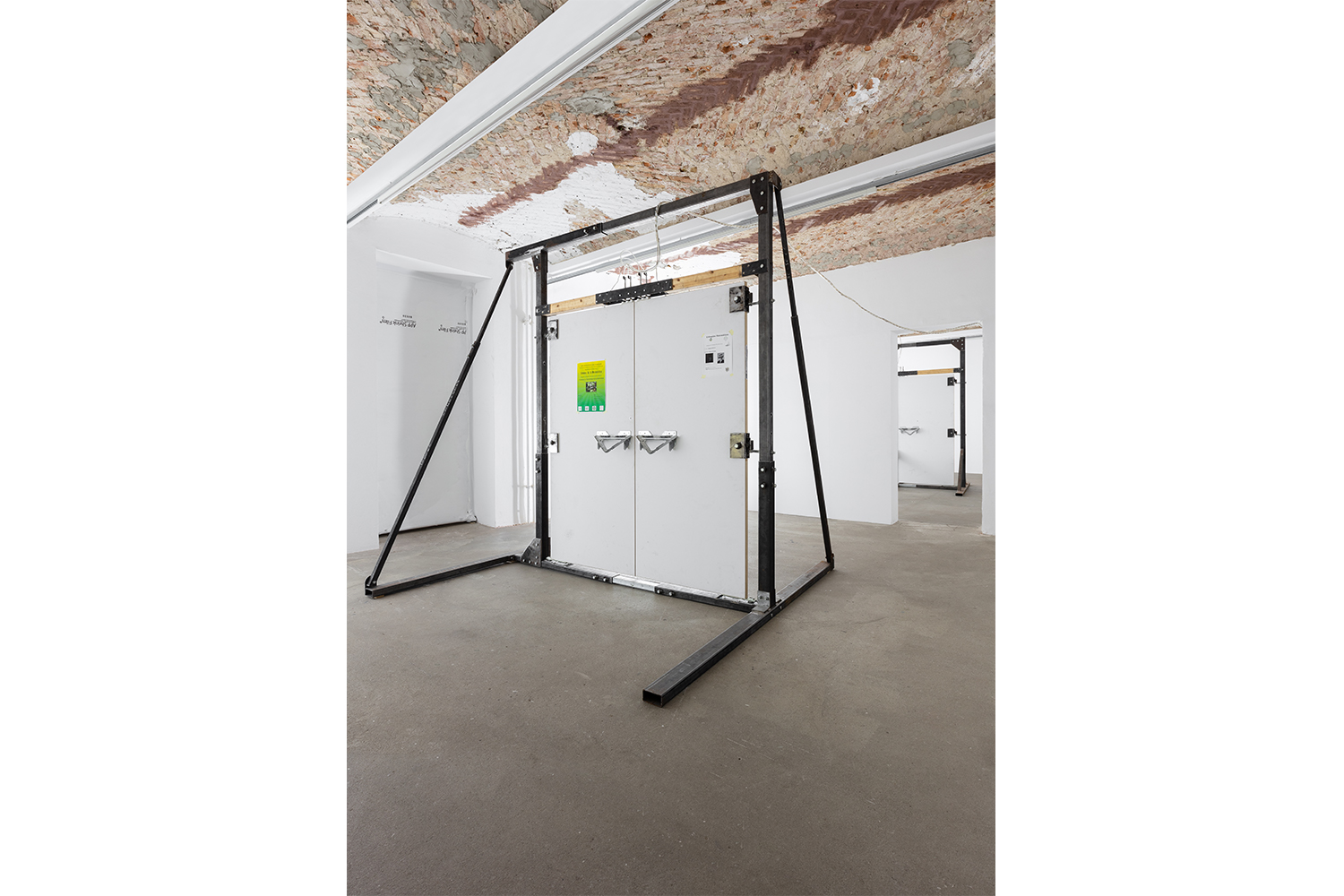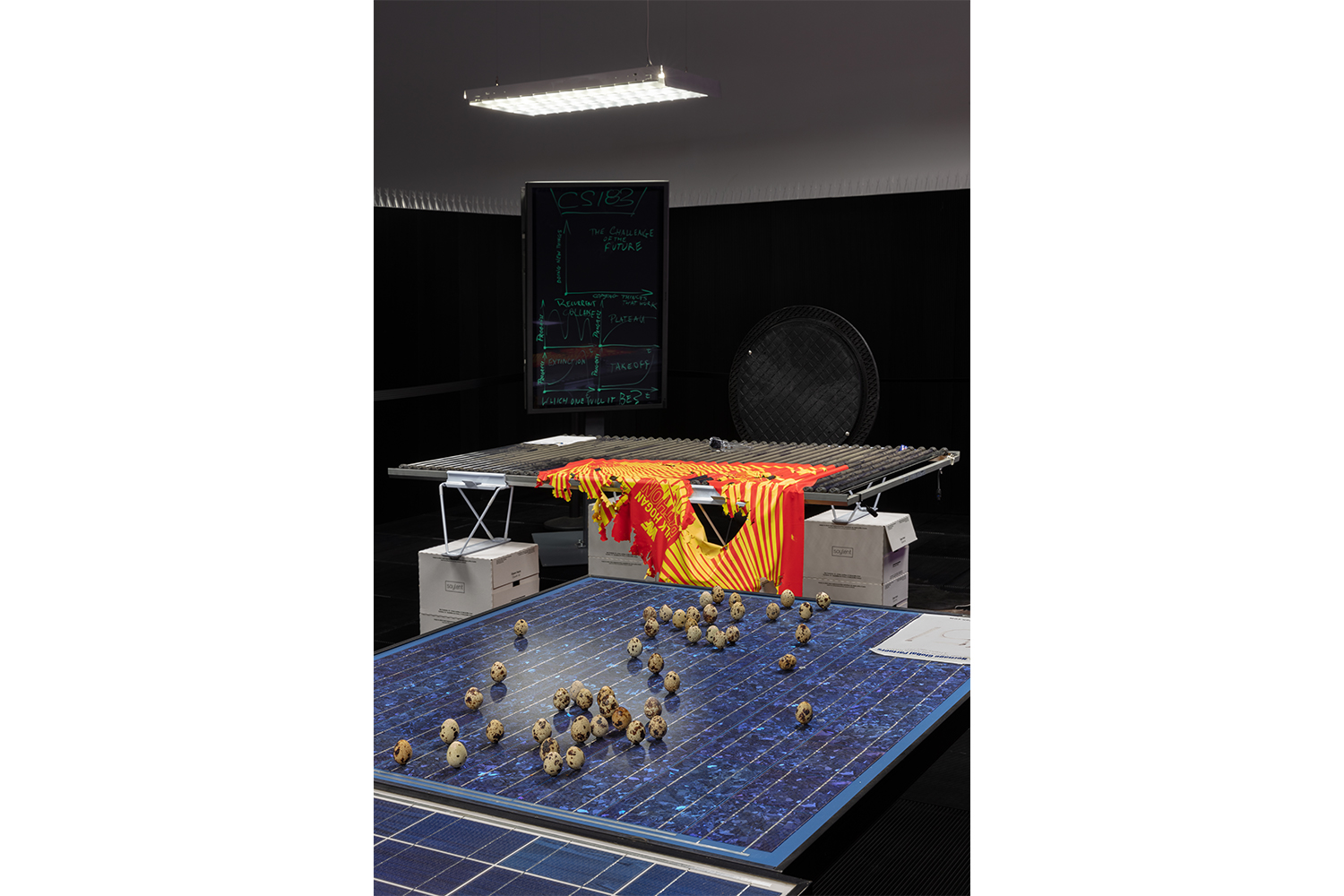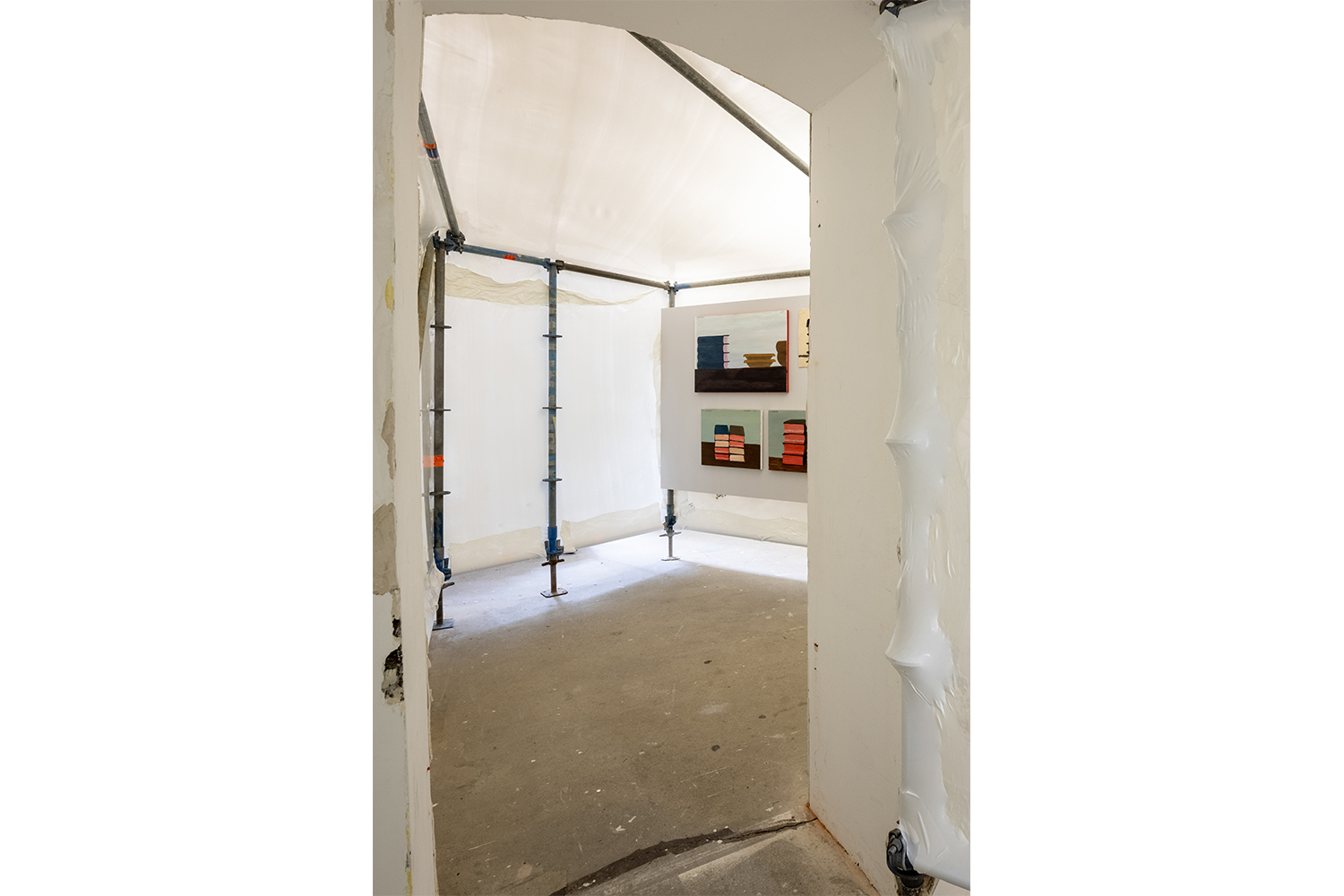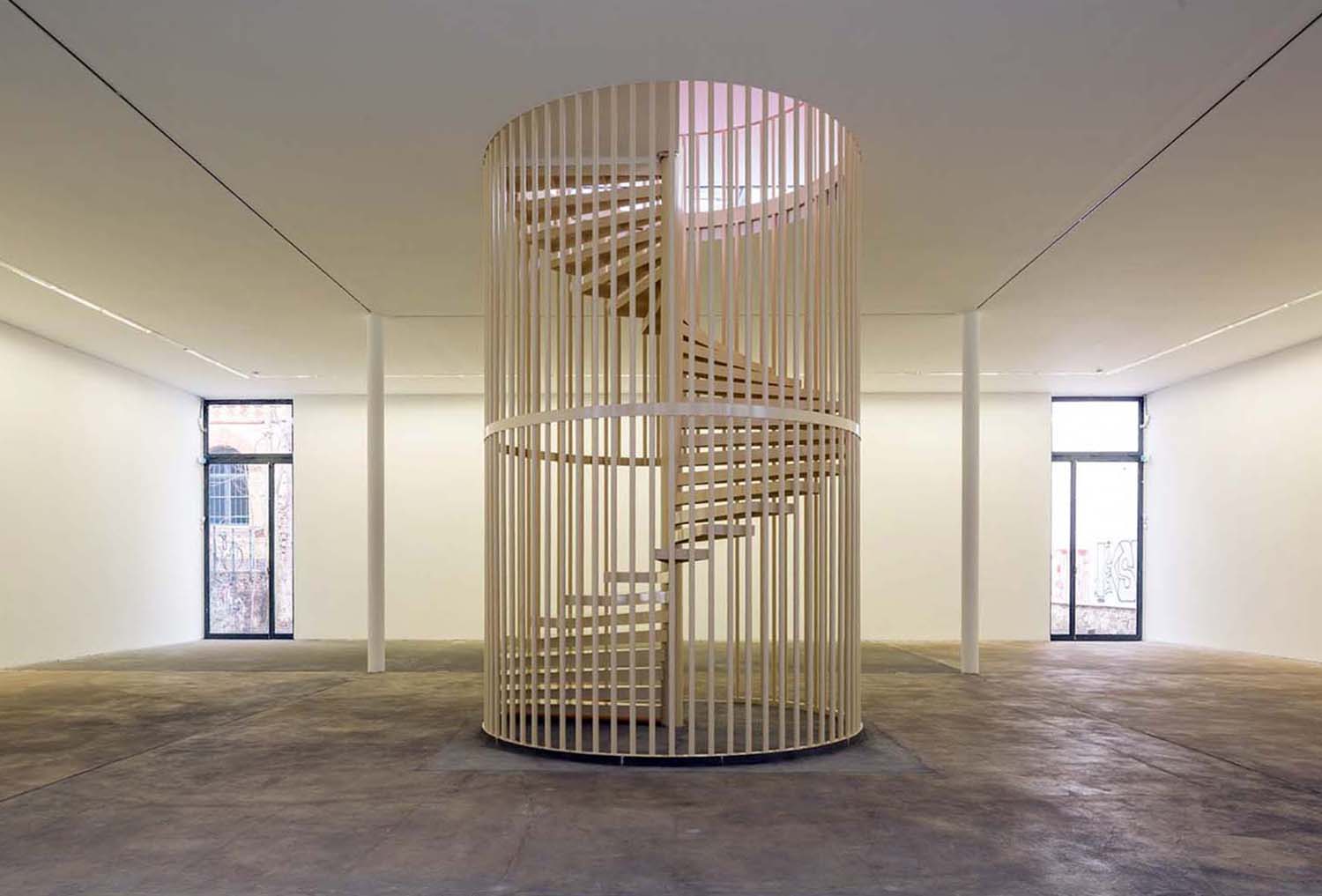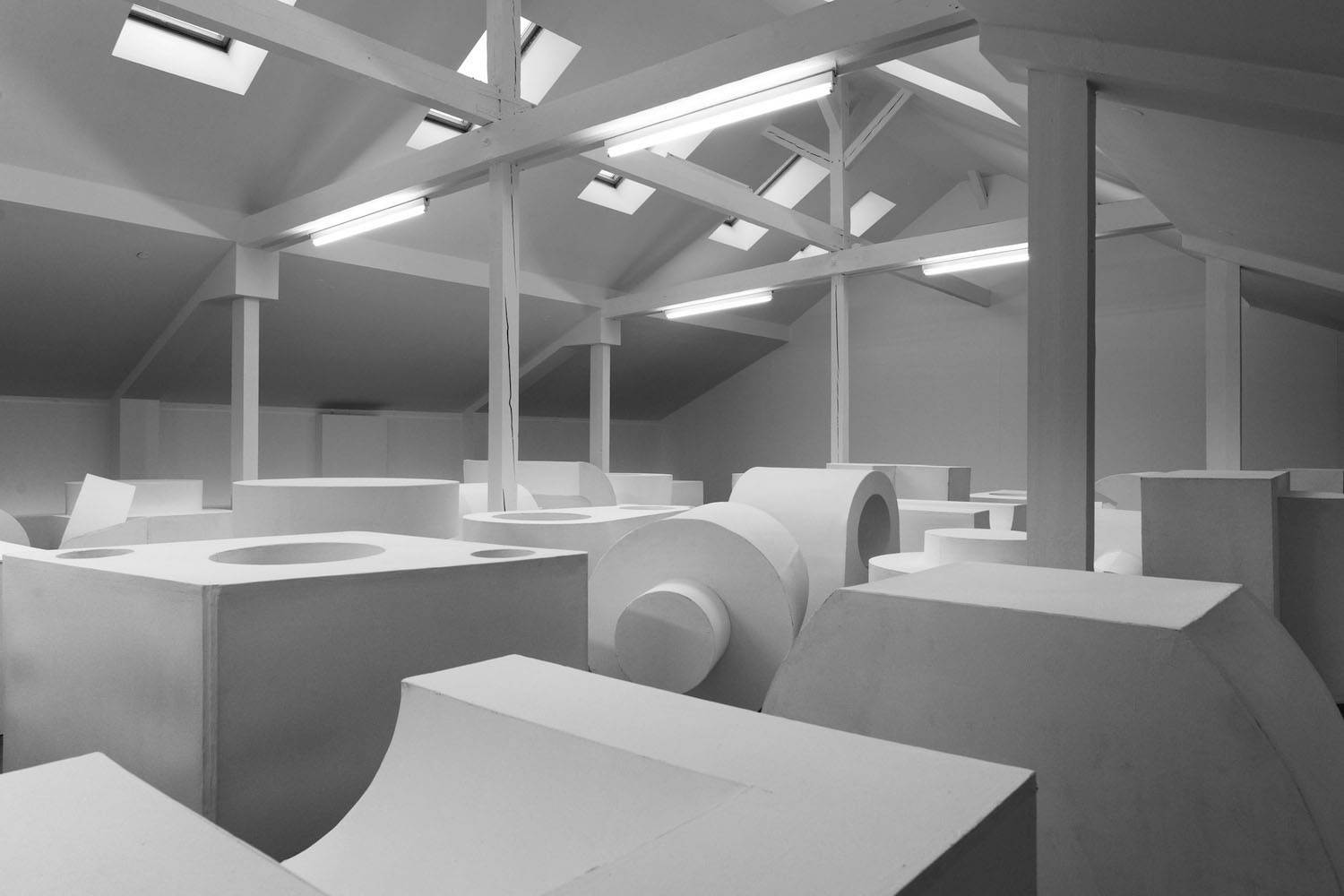Michael Stevenson, “Disproof Does Not Equal Disbelief”. Exhibition view at KW Institute for Contemporary Art, Berlin 2021. Photography by Frank Sperling. Courtesy the artist.
Michael Stevenson, “Disproof Does Not Equal Disbelief”. Exhibition view at KW Institute for Contemporary Art, Berlin 2021. Photography by Frank Sperling. Courtesy the artist.
Michael Stevenson.
Strategic-Level Spiritual Warfare, 2014/21. Photography by Frank Sperling. Courtesy of the artist, Fine Arts, Sydney and Michael Lett, Auckland.
Michael Stevenson, “Disproof Does Not Equal Disbelief”. Exhibition view at KW Institute for Contemporary Art, Berlin 2021. Photography by Frank Sperling. Courtesy the artist.
Michael Stevenson, “Disproof Does Not Equal Disbelief”. Exhibition view at KW Institute for Contemporary Art, Berlin 2021. Photography by Frank Sperling. Courtesy the artist.
Michael Stevenson, “Disproof Does Not Equal Disbelief”. Exhibition view at KW Institute for Contemporary Art, Berlin 2021. Photography by Frank Sperling. Courtesy the artist.
Upon reading the title, I was sure the exhibition would reflect on contemporary conspiracy narratives. But it dives much deeper into history, in part Michael Stevenson’s own. It has taken exactly twenty years for the artist, originally from New Zealand, to have his second solo show in Berlin, the town he has called home since then. Not that he hasn’t been busy — he has taught at the Academy of Fine Arts Nuremberg for more than ten years, and his work has been represented in large-scale exhibitions around the globe. Finally, this two-decade oversight has been corrected with a sprawling exhibition encapsulating several of the projects the artist has worked on over the years.
The show opens with a tent surrounded by posters, leaned against the gallery walls, bearing headlines from New Zealand tabloids. “Call me Immendorff” was an installation the artist realized at his previous Berlin solo show, at Kapinos Galerie in 2001. The headlines deal with two coinciding issues that sometimes appear to be hard to separate: the worldwide financial crisis, which hit New Zealand particularly hard, and Jörg Immendorff’s three-month visit to Auckland in 1987. The juxtaposition of the two stories reveals a relationship between the cartoonish absurdities of art-world rock stardom (“I hate weak artists”) in the context of a provincial elite, and the even more grotesque scale of financial markets and their dire and tragic consequences. The work is about role-play and narrative, but also about the consumption of stories.
Michael Stevenson, The Cheap Heat, 2021, Incl. Color Television Camera Fese KC U 40, 1969/76; Zoom Lens Schneider Variogon, ca. 1967; Loan Stiftung Deutsches Technikmuseum Berlin. Photography by Andrea Rossetti. Courtesy of the artist.
Michael Stevenson, Like a Fish Needs a Bicycle, 2020/21. Photography by Andrea Rossetti. Courtesy the artist, Michael Lett Gallery, Auckland, and Fine Arts, Sydney.
Michael Stevenson, Serene Velocity in Practice: MC510/CS183, 2017/21. Commissioned by Auckland Art Gallery Toi o Tamaki with commissioning partners the Biennale of Sydney 2018 and Monash University Museum of Art I MUMA Commission supported by the Contemporary Benefactors of Auckland Art Gallery, Chartwell Trust, Auckland Contemporary Art Trust, Auckland Art Gallery International Ambassadors, and Michael Lett, Auckland. Photography by Andrea Rossetti. Courtesy of the artist, Michael Lett Gallery, Auckland, and Fine Arts, Sydney.
Michael Stevenson, Serene Velocity in Practice: MC510/CS183, 2017/21. Commissioned by Auckland Art Gallery Toi o Tamaki with commissioning partners the Biennale of Sydney 2018 and Monash University Museum of Art I MUMA Commission supported by the Contemporary Benefactors of Auckland Art Gallery, Chartwell Trust, Auckland Contemporary Art Trust, Auckland Art Gallery International Ambassadors, and Michael Lett, Auckland. Photography by Andrea Rossetti. Courtesy of the artist, Michael Lett Gallery, Auckland, and Fine Arts, Sydney.
Michael Stevenson, Hold Up to Live Camera, 2021. Photography by Andrea Rossetti. Courtesy of the artist.
Michael Stevenson, Hold Up to Live Camera, 2021. Photography by Andrea Rossetti. Courtesy of the artist.
Stories and connections between stories are at the core of an impressive production that is less essay, more novel. Strategic-Level Spiritual Warfare from 2014 is an installation consisting of freestanding metal doorframes holding white doors. They resemble guillotines that viewers can walk through, the only question being whether you need to push or pull. The latter is determined by a hydraulic lever mechanism controlled by remote players of a variety of computer games in a tent in an adjacent room. The doors themselves reference the frugal “door desks” of Amazon internet lore, according to which founder Jeff Bezos made work surfaces for his very first employees using doors with legs, as they were cheaper than proper desks. The whole system tests the premise of legendary mathematician, playwright, and politician José de Jésus Martínez, whom Stevenson has referenced in previous works. Martínez maintained that the unpredictable direction of a swinging door was the site of pure evil.
Michael Stevenson, The Cheap Heat, 2021, Incl. Color Television Camera Fese KC U 40, 1969/76; Zoom Lens Schneider Variogon, ca. 1967; Loan Stiftung Deutsches Technikmuseum Berlin. Photography by Andrea Rossetti. Courtesy of the artist.
Michael Stevenson, “Disproof Does Not Equal Disbelief”. Exhibition view at KW Institute for Contemporary Art, Berlin 2021. Photography by Frank Sperling. Courtesy the artist.
Michael Stevenson, Serene Velocity in Practice: MC510/CS183, 2017/21. Commissioned by Auckland Art Gallery Toi o Tamaki with commissioning partners the Biennale of Sydney 2018 and Monash University Museum of Art I MUMA Commission supported by the Contemporary Benefactors of Auckland Art Gallery, Chartwell Trust, Auckland Contemporary Art Trust, Auckland Art Gallery International Ambassadors, and Michael Lett, Auckland. Photography by Andrea Rossetti. Courtesy of the artist, Michael Lett Gallery, Auckland, and Fine Arts, Sydney.
Michael Stevenson, “Disproof Does Not Equal Disbelief”. Exhibition view at KW Institute for Contemporary Art, Berlin 2021. Photography by Frank Sperling. Courtesy the artist.
Michael Stevenson, Serene Velocity in Practice: MC510/CS183, 2017/21. Commissioned by Auckland Art Gallery Toi o Tamaki with commissioning partners the Biennale of Sydney 2018 and Monash University Museum of Art I MUMA Commission supported by the Contemporary Benefactors of Auckland Art Gallery, Chartwell Trust, Auckland Contemporary Art Trust, Auckland Art Gallery International Ambassadors, and Michael Lett, Auckland. Photography by Andrea Rossetti. Courtesy of the artist, Michael Lett Gallery, Auckland, and Fine Arts, Sydney.
Michael Stevenson, “Disproof Does Not Equal Disbelief”. Exhibition view at KW Institute for Contemporary Art, Berlin 2021. Photography by Frank Sperling. Courtesy the artist.
Or was that Amazon?
Every single work in the show requires time for it to reveal its interwoven narratives. Even then, one has barely scratched the surface of this artistic endeavor. The playful complexity of the installations as theatrical settings easily drags viewers into the underbelly of its stories, where they might reflect on notions of individual and historic presentation and representation, truth and conspiracy. After spending a long time in the exhibition, I realized that my initial hunch was not completely off. Everything is indeed interconnected. Give me enough time and I can prove it.

